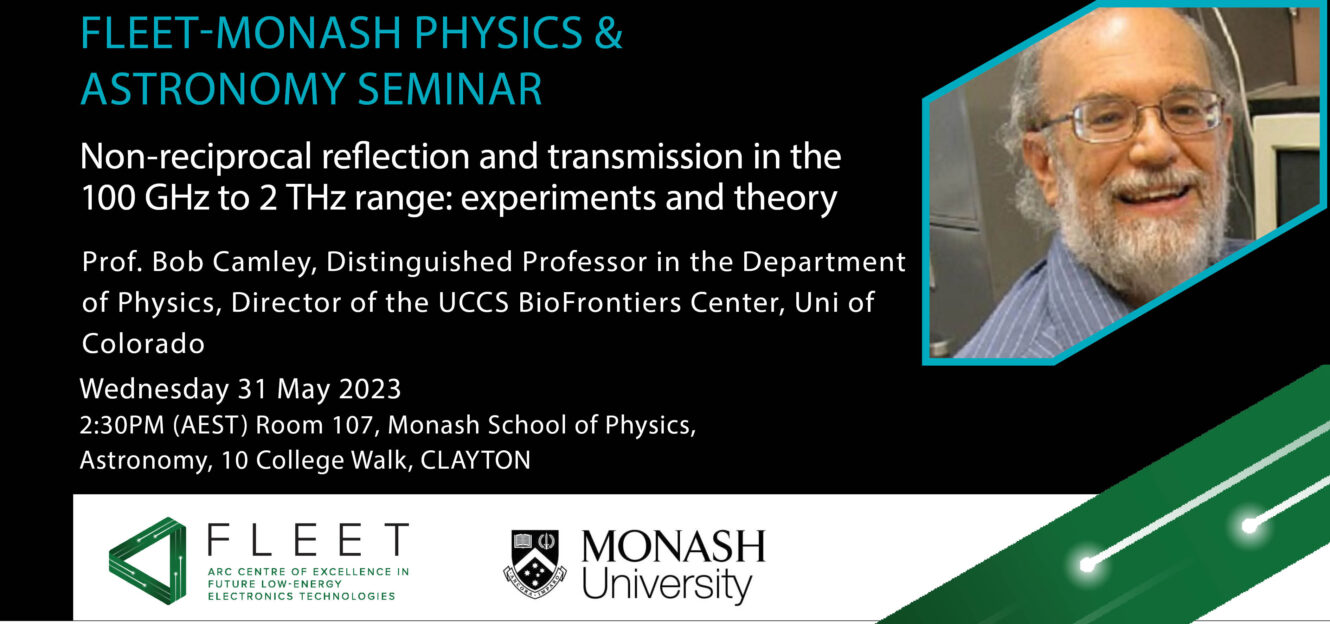-
31 May 2023
2:30 pm - 4:00 pm
Prof. Bob Camley, Distinguished Professor Dept of Physics, Director of the UCCS BioFrontiers Center, University of Colorado. Currently: Fulbright Distinguished Chair, University of Newcastle, NSW
In person: Monash University Clayton, School of Physics and Astronomy, 10 College Walk Building 27, Room 107.
Missed the seminar. Watch it on FLEET’s YouTube
Nonreciprocal behavior (eg, where reversing the direction of the wave leads to a different propagation frequency) is important for devices such as isolators and circulators. But there are other types of nonreciprocity as well, e.g. reflection or transmission may be different if the wave direction is reversed. Here we discuss the background of nonreciprocity and several natural (antiferromagnets) and micro-structured systems which can generate large nonreciprocal reflections or transmission. The micro-structuring allows adjustment of the background dielectric constant which can significantly enhance the nonreciprocity. Nonreciprocity often occurs with the aid of a magnetic field or magnetic material, but we also show some results in hyperbolic materials where transmission depends on the direction of the incident wave.
If there is interest and time, Prof Camley can also give a short introduction to another talk, Why do scientists cheat: mass hysteria, conspiracies about plagiarism, and fabrication of results.
Prof. Camley got his PhD in theoretical physics from the University of California, Irvine. He then spent 2.5 years at the Max Planck Institute in Stuttgart and shortly after that became a faculty member at the University of Colorado. His primary research has been in the thermal and electromagnetic properties of magnetic materials, linear and nonlinear excitations, and while visiting with Peter Grunberg he and Josef Barnas developed the first theoretical explanation of the Giant Magnetoresistance effect. He also has an interest in biophysics where he and colleagues at UCCS have been working on ways to make temperature visible in MRI images.

